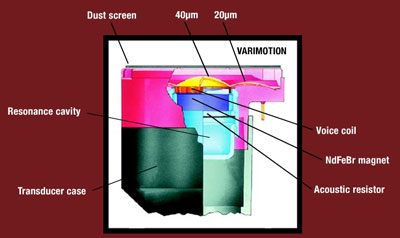Nothing is worse than feedback during a performance. Whether you are on the stage or part of the audience, sound system feedback can be a painful disruptive experience. Despite its unpopularity, feedback has been an unfortunate reality of live performance for many years.
There are a variety of ways to fight feedback, but one of the methods we recommend is using microphone models that have a tight polar pattern and are less likely to feedback. AKG recently announced a major breakthrough in the fight against feedback with new technology featured in their new microphone model
the D5. AKG went so far as to say "Feedback Is Dead".
What causes feedback and what did they do to say that it is dead? Feedback occurs when the sound system becomes the loudest acoustic source at the microphone's diaphragm (the element that picks up the sound). The sound from the speaker gets into the microphone and is re-amplified and sent through the speakers again and again.

The
AKG D5 microphone uses a high-tech Laminate Varimotion diaphragm that smoothes out the response ripples that excite resonances in the sound system and provides better sound quality as well. The AKG D5's supercardioid pickup pattern helps the process by having a high sensitivity from the front and far less sensitivity from the back and sides. We did testing with the new D5 and other popular microphones in its class in close proximity to live loudspeakers and we found that the D5 will get louder before feedback than any competitive microphone.
The
AKG D5 is specifically designed as a live performance vocal microphone with a wide frequency response. It also favors the mid and treble frequencies and will cut through even the loudest mix with crystal clear sound.
The technology behind this great microphone:

The Varimotion diaphragm is a single-piece molded diaphragm with a varying thickness. At its outer edge the diaphragm is very thin so it can react to low frequencies easily and quickly; as you move in towards its voice coil, the diaphragm gets progressively thicker. The progressively increasing thickness prevents the diaphragm from breaking up and distorting at high sound pressure levels and helps it reproduce every part of the sound spectrum without compromise. The diaphragm also has trapezoidal corrugations on its surface to allow response shaping without the use of internal resonators or electronic EQ onboard the mic chassis. The result is a transducer with incredible sonic detail, low distortion and superb pattern control.
AKG's primary goal was to build a sweeter, smoother-sounding microphone, the gain before feedback was a by-product. By minimizing the frequency response irregularities caused by diaphragm resonances and cone breakup, the gain before feedback improvement was huge. While testing the
AKG D5 microphone, we found that AKG had in fact contributed a shining star of a product, destined to help many feedback-prone situations with a solution worthy of praise.
Want to learn more about feedback? Read our Expert Advice on
Feedback Control and Room Tuning.